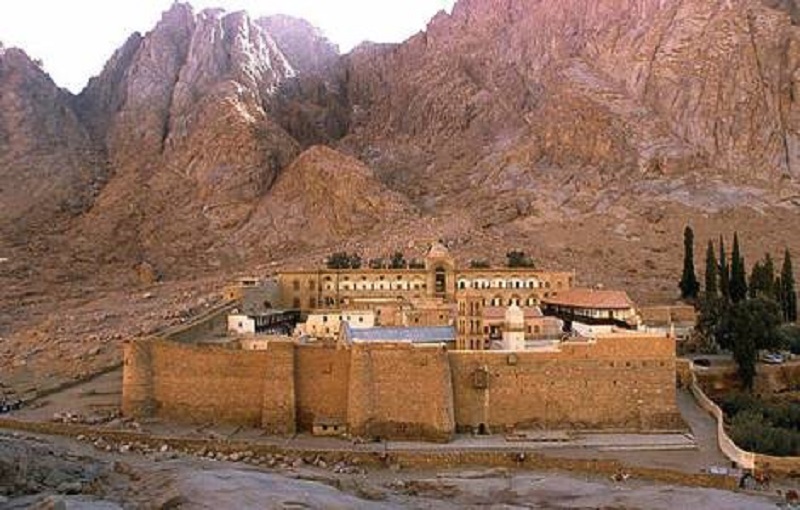While Turkey’s President Recep Tayyip Erdogan reopens the former Byzantine basilica of Hagia Sophia for Islamic worship, in Egypt President Abdel Fattah al Sisi launches development projects aimed also at promoting the influx of pilgrims to St. Catherine’s Monastery, in the south of the Sinai Peninsula, considered one of the oldest Christian monastic complexes in the world, reported Fides News Agency.
On Sunday 12 July, during an operational meeting dedicated to the launch of large-scale urban and infrastructure projects, the Egyptian Head of State urged Prime Minister Mostafa Madbouly and other members of the government to accelerate the development program already outlined around the city of Saint Catherine, aimed at enhancing and making the historical and spiritual heritage concentrated in the southern Sinai region more accessible.
In some statements made to the national media, Greek Orthodox Archbishop Damianos of Mount Sinai thanked the Egyptian authorities for the attention and the resources they invested in projects aimed at facilitating the influx of pilgrims to St. Catherine’s Monastery. The development program under study by the Egyptian government also provides for the construction of an airport in the region, which would allow for the organization of pilgrimages with direct flights coming mainly from Greece and Cyprus, guaranteeing pilgrim tourists the possibility of reaching the monastery in complete safety.
St. Catherine’s Monastery, on the slopes of Mount Horeb, currently houses about twenty Greek Orthodox monks subject to the authority of an Archbishop/abbot, and enjoys a status of autocephaly. It is considered the oldest still active Christian monastery, and in 2002 it was declared a World Heritage Site by Unesco for its Byzantine architecture, its precious collection of icons, and the collection of ancient manuscripts.
In recent years, the life of the monastery has gone through difficult times, also having to face a serious financial crisis due to the total stop of the tourist flow, which in the past brought tens of thousands of pilgrims to the ancient monastic complex every year. The temporary closure of the monastery to visitors, which was ordered by the Egyptian authorities starting from 2013, after a few incidents – including the kidnapping of a monk – had raised the alarm about possible terrorist attacks against the religious Greek-Orthodox community.
In March 2014 (see Fides, 31/3/2014), the monks of St. Catherine were accused by retired general Ahmed Ragai Attiya of having changed the topography of the area, of having hidden the so-called 12 streams of Moses (those which according to tradition, quenched the Jewish people’s thirst during their Exodus to the Promised Land), of having taken possession of 20 percent of the land in southern Sinai, of having hoisted the Greek flag on the Monastery in some special occasions and of having turned the monastery into an area occupied by Greece and by the European Union. Taking a cue from these attacks, some media outlets close to the Salafists had accused the Monastery of connivance with the Israeli intelligence services, accusing the monks of even posing a threat to national security.



